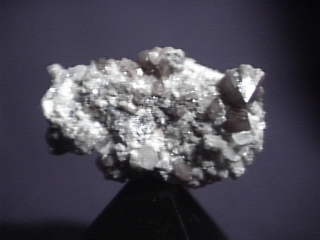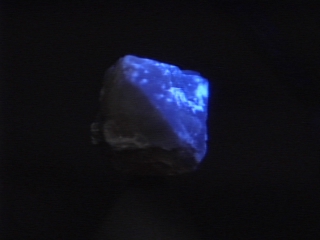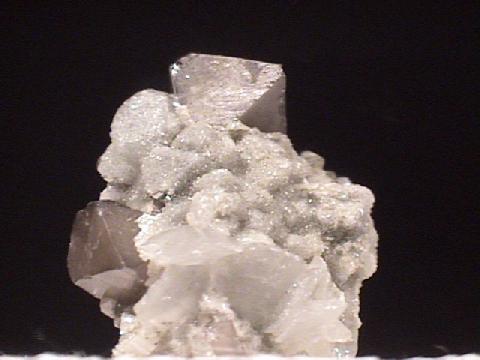 THE MINERAL SCHEELITE
THE MINERAL SCHEELITE
- Chemistry: CaWO4, Calcium Tungstate
- Class: Sulfates
- Subclass: Tungstates
- Uses: An important source of tungsten, rarely cut as gemstones and as mineral specimens.
Specimens
Scheelite is a popular mineral for collectors. It forms perfect tetragonal dipyramidal crystals that look very much like octahedrons. These pseudo-octahedral crystals are sometimes truncated with minor pyramids, but only on the top and/or bottom points of the crystal; giving evidence of their true symmetry. Other minerals that form pseudo-octahedral crystals similar to scheelite include wardite, anatase and powellite.
Powellite, CaMoO4, is isostructural with scheelite which is why it forms similar crystals. The two minerals form a series in which the tungsten of scheelite is substituted for by the molybdenum of powellite. Powellite fluoresces a yellow color while scheelite fluoresces a bright blue under short wave ultraviolet light. Of course since molybdenum can substitute for tungsten, some scheelite specimens will show a yellow fluorescence.
The crystals of scheelite can look like fluorite octahedrons which can also fluoresce. However, fluorite has perfect octahedral cleavage and a lower luster. Massive scheelite has often been mistaken for massive quartz, but then the fluorescence of scheelite is a dead giveaway.
Many prospectors for scheelite have made good use of scheelite's typically bright blue fluorescence by searching for scheelite deposits by night with ultraviolet lamps. Many old mines have even been reopened after examination of the mine shafts with ultraviolet lamps have proven that the ore is not quite yet exhausted.
PHYSICAL CHARACTERISTICS:
- Color is white, yellow, orange or greenish gray to brown.
- Luster is adamantine to greasy.
- Transparency: Crystals are transparent to translucent.
- Crystal System is tetragonal; 4/m
- Crystal Habits include the pseudo-octahedral crystals that are actually tetragonal dipyramids. Also massive and granular.
- Cleavage is indistinct in two directions and good in another (dipyramidal).
- Fracture is conchoidal.
- Hardness is 4.5 - 5.
- Specific Gravity is approximately 5.9 - 6.1 (very heavy for translucent minerals).
- Streak is white.
- Other Characteristics: Fluoresces blue (yellow with molybdenum traces) under short wave ultraviolet light.
- Associated Minerals are quartz, garnets, vesuvianite, epidote, topaz, schorl, apatite, gold, silver, molybdenite, cassiterite, wolframite and fluorite.
- Notable Occurrences include Hollinger Mine, Ontario, Canada; Saxony, Germany; Tong Wha, Korea; Brazil; Sonora, Mexico; Cornwall, England; New South Wales and Queensland, Australia and Mill City, Nevada, Atolia, San Bernardino Co., California, Cochise Co., Arizona, Utah and Colorado, USA.
- Best Field Indicators are crystal habit, color, density, luster and especially its fluorescence.


























